Want to attend the course but can’t make it on this date?
Fill in your details below and we’ll notify you when we next present a course in this area:
We have over 4,000 delegates a year attend our snake awareness, first aid for snakebite and venomous snake handling courses. These courses are offered to corporate clients throughout Africa whose staff need to deal with snake encounters on site. They include the likes of mines, solar and wind farms, game lodges, bush clearing teams, power plants, construction companies, etc.
We also offer the courses to members of the public at various venues around South Africa – ideal for people who want to learn more about snakes, how to remove them from their properties or how to deal with snake encounters, and first aid for snakebite.
Our snake handling protocols have been developed over several years, and we make sure to teach the safest snake removal techniques and protocols to all our delegates. There is no compromise when it comes to snake safety!
We have also developed and manufacture a large range of quality snake handling equipment, specifically suited to African snakes, and proudly offer the largest selection of quality snake handling equipment in Africa!
We discuss catch and release logistics in our practical courses, and we have listed a few important guidelines below:
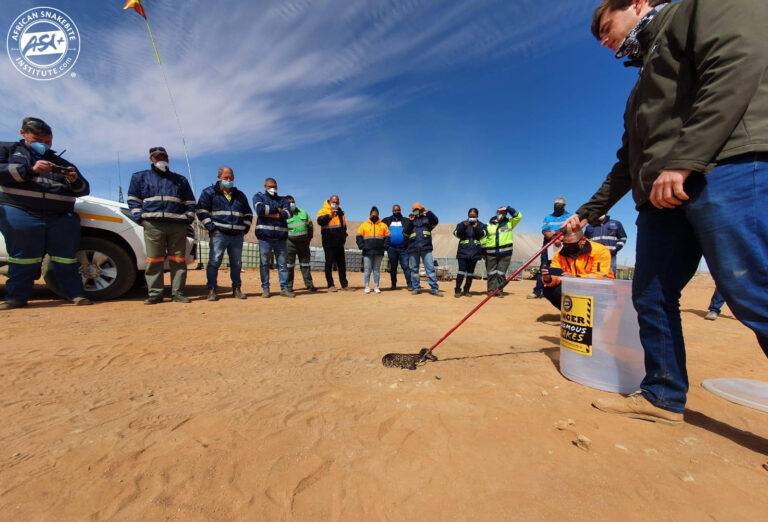
Snake Removers need to have a valid Catch and Release Permit
By law all snake removers are required to have a valid catch and release permit, which is issued by the Nature Conservation offices in their area. In most provinces, these permits are valid for 1 year.
For people removing Southern African Pythons or Gaboon or Namaqua Dwarf Adders, a TOPS (Threatened or Protected Species) permit is required. The African Snakebite Institute can assist delegates with the application for such permits through our Snake Rescue Association. Contact Sake on support@asiorg.co.za for more information.
Snake removers need to keep a catch and release logbook
Snake removers need to keep a log of what snakes are caught, where they were caught and where they were released. Taking photographs or a video of the snake being released and keeping this on file is a good idea. Your permit conditions may suggest that you need to submit a copy of this logbook to your nature conservation body. Uploading your removals to a database like the Virtual Museum ReptileMap or iNaturalist is a great way to log your removals and allows researchers to use your records to improve distribution maps of southern African snakes.
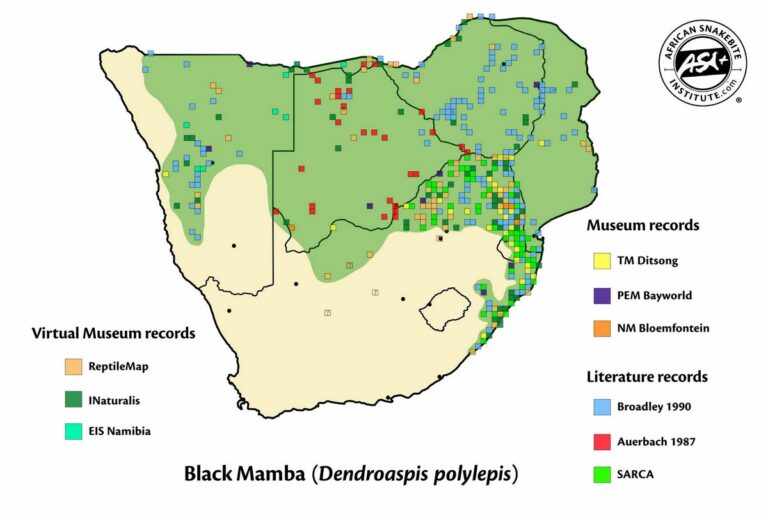
Snake Removers need to have a set of snake handling equipment
It is vitally important to ensure that snake handling equipment is kept in good working order, and that the snake remover has easy access to it at all times. A full set includes snake tongs, a snake hook, snake tube or a snake bucket and some form of eye protection. For corporate sites, snake gaiters are often also a requirement. Some conservation bodies require a photograph of the snake handling equipment when applying for a catch and release permit.
Crowd control
When doing a removal, control the crowd. Ask for dogs to be locked away and make sure kids are being closely watched by parents and are kept away from the snake. Ask the person to monitor where the snake is whilst you are on your way. Snakes can disappear quickly into small holes or thick vegetation and are extremely difficult to locate once they disappear.
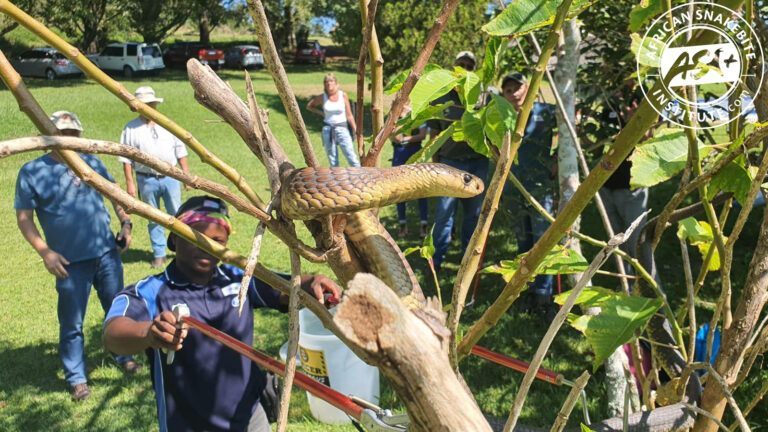
How long can snakes be kept for?
Ideally snakes should be released as soon as possible. Wild snakes stress in captivity and the sooner you can release them back into suitable habitat, the better for them. Your Catch and Release Permit will also stipulate the number of days you are allowed to keep an animal in your possession. Some catchers may wait until bad weather or cold snaps pass before releasing the snake.
Should we feed the snake before release?
Being caught is highly stressful for snakes, and they often regurgitate their last meal. Unless the snake is kept for a long time, perhaps because of an injury that needs tending to, feeding them is not required.
Can I keep the wild snake I caught?
In all provinces, except KwaZulu-Natal, wild snakes may not be kept in captivity. A possession permit must be obtained for any indigenous captive bred reptile. Some species fall under the new Threatened or Protected Species (TOPS) act and require an additional TOPS permit. TOPs applies to all provinces of South Africa.
Species under ToPS:
Southern African Python (Python natalensis)
Gaboon Adder (Bitis gabonica)
Namaqua Dwarf Adder (Bitis schniederi)
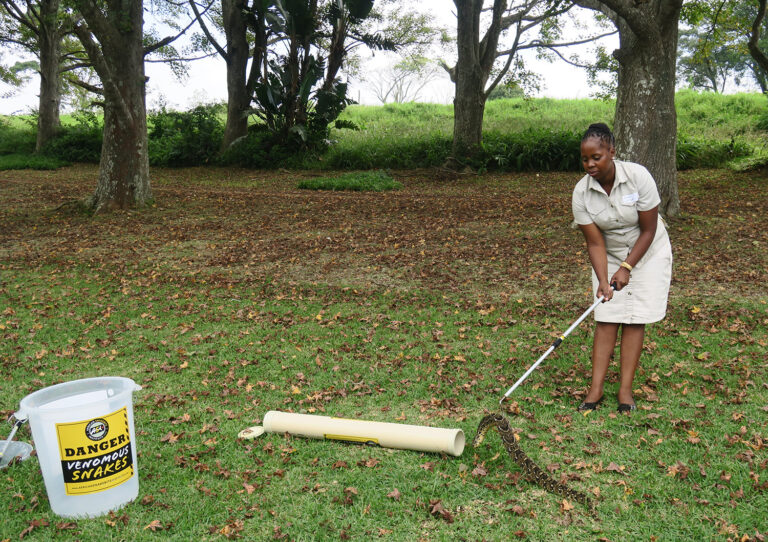
What do I do with injured snakes?
There are a number of wildlife vets in southern Africa who can assist with injured animals. Minor injuries such as a tear in the skin or a missing tail tip can usually be cleaned with some antiseptic liquid and then released. Snakes are hardy and will survive most slight injuries. Keeping them and looking after them often creates more stress for the animal and may compromise recovery.
Where should snakes be released?
Ideally snakes should be release between 2 and 10 kilometers from where they are caught. Make sure the habitat is suitable, and that there are no human dwellings in the vicinity. Nature Reserves or open fields away from people are ideal. Note that your catch and release permit may have guidelines or conditions about the release of the snake in your province.
Get added to the app
If your catch and release permits are in order, we would be happy to add you to the ASI SNAKES App. With almost 250 000 downloads, there are a lot of people searching for snake removers across southern Africa. You could help your neighbourhood and community and save the lives of snakes in the process. You can sign up as a snake remover on the website (https://www.africansnakebiteinstitute.com/snake-removals-information/be-listed/).
Links:
https://www.africansnakebiteinstitute.com/articles/snake_safety_on_site/
https://www.africansnakebiteinstitute.com/articles/snakes-and-workplace-safety/
https://www.africansnakebiteinstitute.com/articles/how-to-become-a-snake-catcher-in-south-africa/
https://www.africansnakebiteinstitute.com/articles/guide_to_buying_snake_handling_equipment/
https://www.africansnakebiteinstitute.com/articles/top-10-guidelines-for-safe-snake-removals/
https://www.africansnakebiteinstitute.com/articles/hands-off-when-it-comes-to-on-site-snake-removal/
CONTACT US:
Product enquiries:
Caylen White
+27 60 957 2713
info@asiorg.co.za
Public Courses and Corporate training:
Michelle Pretorius
+27 64 704 7229
courses@asiorg.co.za
 ASI Lite Combo 3
R1,575.00
ASI Lite Combo 3
R1,575.00
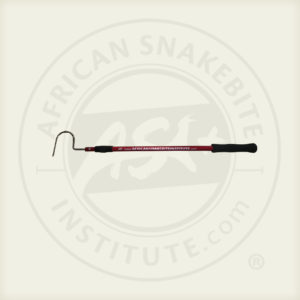 ASI Collapsible Snake Hook - 1.2 m
R650.00
ASI Collapsible Snake Hook - 1.2 m
R650.00
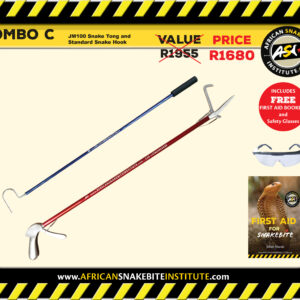 ASI Combo C
R1,680.00
ASI Combo C
R1,680.00
Want to attend the course but can’t make it on this date?
Fill in your details below and we’ll notify you when we next present a course in this area:
Want to attend the course but can’t make it on this date?
Fill in your details below and we’ll notify you when we next present a course in this area:
Want to attend the course but can’t make it on this date?
Fill in your details below and we’ll notify you when we next present a course in this area:
Want to attend the course but can’t make it on this date?
Fill in your details below and we’ll notify you when we next present a course in this area:
Want to attend the course but can’t make it on this date?
Fill in your details below and we’ll notify you when we next present a course in this area:
Want to attend the course but can’t make it on this date?
Fill in your details below and we’ll notify you when we next present a course in this area:
Want to attend the course but can’t make it on this date?
Fill in your details below and we’ll notify you when we next present a course in this area:
Want to attend the course but can’t make it on this date?
Fill in your details below and we’ll notify you when we next present a course in this area:
Want to attend the course but can’t make it on this date?
Fill in your details below and we’ll notify you when we next present a course in this area:
Sign up to have our free monthly newsletter delivered to your inbox:
Before you download this resource, please enter your details:
Before you download this resource, would you like to join our email newsletter list?